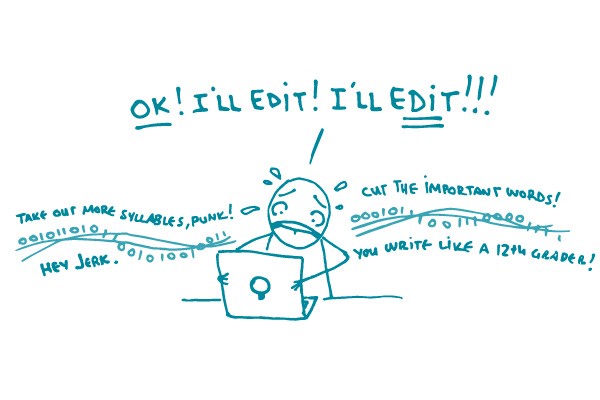
We’ve written about the controversial topic of problems with readability formulas — and we’re back to further explain our position.
Readability formulas give you a rough idea of how easy a material is to understand, but they’re imprecise and often inaccurate. Nearly everyone agrees on their limitations, yet many agencies and organizations require materials to meet a certain readability score. Why?
First, readability scores have been around a long time — the earliest Flesch formula is almost 70 years old — so people trust them. They have the feeling of tradition, objectivity, and scientific rigor. People like the idea of a systematic way to evaluate good writing.
Second, they’re just so easy to use. When you finish writing, you run the Flesch-Kincaid analysis built into Word, tweak a few sentences, and boom, you’ve done your plain language due diligence. Easy-peasy.
Third, there’s the issue of scalability. Let’s say you’re a huge hospital or health plan and you need some way to make sure all of your communication materials are clear. What are your options? Some organizations will invest in training and building the capacity of their communication staff (hooray!), but many will turn to an automated readability formula.
Readability formulas aren’t awful at evaluating finished text — as long as you remember they’re a hint that you’re on the right track and not a seal of approval. The problems start when you use a readability score as a be-all and end-all measure. They easily tempt good writers into writing like bad writers in order to beat the formula at its own game.
For instance, let’s say you wrote this:
- If you have any of the following symptoms, you might have a life-threatening infection. It’s very important for you to go to the hospital right away.
Seems pretty clear, but it scores a 9.2 grade reading level. Not good. So you try again.
- If you feel sick, go to the hospital.
A score of 2.2! You totally nailed it.
And there’s the problem: You use shortcuts to get the score you want. You cut out a perfectly clear word (like “important”) because it has more than 2 syllables. You skip key concepts because they require words that will bump your score higher (like “life-threatening”). If you do these things, you will get a lower score — but it will also be much harder for your reader to get the full context of your message.
You’re a good writer — don’t let an algorithm boss you around.
The bottom line: Don’t go for the quick fix of a low readability score. As you write and edit, let the subject and your audience guide you — and trust your communication experience.
Browse recent posts